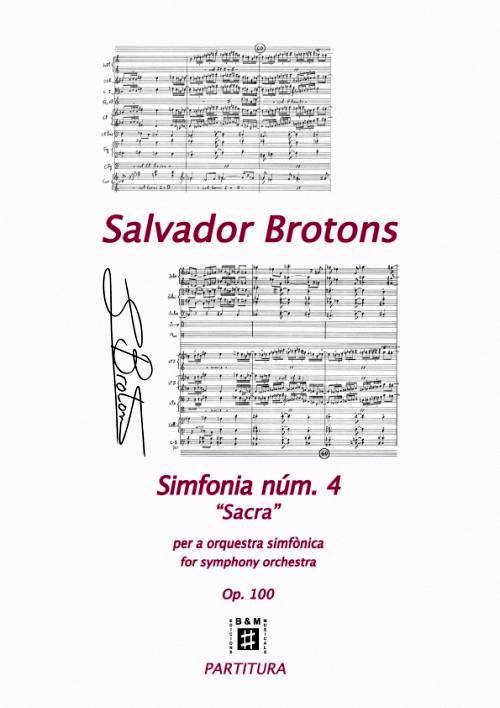Description
Author
Format
Instrumentation
Plantilla
Duration
Pages
Year of composition
ISMN
Ref.
The Symphony No. 4 “Sacra” had a complex gestation. I began in 2002, starting from the orchestration of my Requiem Trio for violin, cello and piano that has four movements: Dies Irae, Tuba mirum, Lacrimosa and Lux aeterna. The same year I composed the movements Requiem aeternam and Libera me. I was not very convinced about the work and I let it rest for a few years.
In 2015 I made a first review by lengthening the second movement and adding the Poenas inferni to bring greater dynamic contrast.
Finally, in January 2019 I made what I hope is the final revision of the symphony, modifying orchestration details and expanding some parts. The work exceeds 40 minutes and is, up to now, the longest symphony I’ve written.
Based on titles extracted from the liturgical text of the Requiem, this is a work marked by the depths of expression and by very evident contrasts.
Movements 1, 3, 4, 6, and 7 are slow and deeply expressive, while movements 2 and 5 are fast and rather aggressive.
The Requiem aeternam opens with a mysterious introduction followed by two main themes. The first theme is presented by the whole orchestra and the second is presented by a long solo of the French horn. Solemn in character, it has an enigmatic component of remarkable expressive intensity.
The Dies irae, as its title indicates, reflects the rage of the day of death at an unstoppable pace. A second, more lyrical and expansive theme acquires a long development, achieving peaks of high intensity.
Tuba mirum is a brief, mysterious and thoughtful space with notable solo interventions by the woodwind. Two worlds are contrasted: The supernatural dramatic power against the spirit of weak and unequal struggle of the individual.
Lacrimosa is the desolate lament for the loss of a loved one. A very concentrated movement of sonorous growth that culminates at an algid point and gradually sinks into absolute pessimism.
Poenas inferni expresses the fear of hell represented by extravagant play of timbres and a central section with a grotesque solo by a demonic trombone backed by an unstable waltz rhythm.
Lux aeterna is the dim and distant light of hope. A brief space to fly in a cold world of ethereal fantasy. The harmonics of the strings and the high register of the piano along with the keyboard percussion instruments cause this environment.
Libera me is the end desired by all mankind: To live in a full, fair and beautiful world and enjoy all eternity alongside all loved ones. Liberation from evil and the fullness of eternal life. A chorus of invisible voices (optional) help to visualize this idealized world with highly pleasurable sound contrasts.
Salvador Brotons














There are no reviews yet.